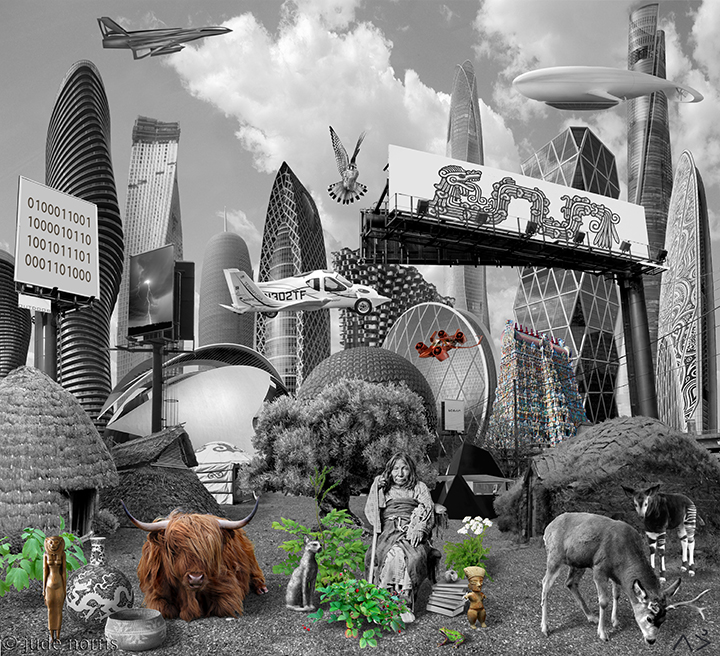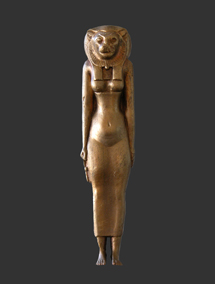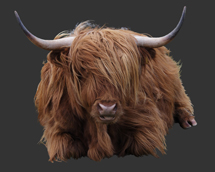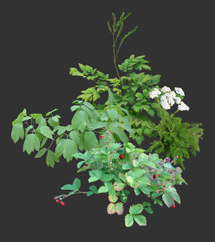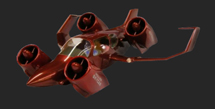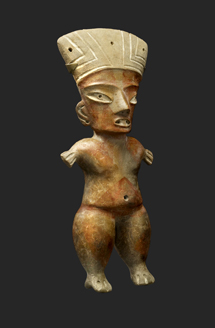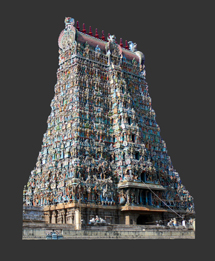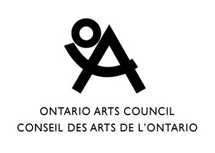PLEASE CLICK ON IMAGE TO ENLARGE & VIEW IN LIGHTBOX
INFORMATION ON LIBERTY VILLAGE #3 LANDSCAPE ELEMENTS:
objects, people, animals & other beings (left to right)
Egyptian Goddess Sekhmet (Statuette)
circa 1370 B.C
Lion-headed sun-deity and warrior goddess. Goddess of war, destruction and misfortune, but also of healing. She was known as the patron of physicians, and healers.
Counterpart to the Goddess Bastet.
Ming Dynasty porcelain Chinese dragon vase
Circa 1403-1424
Blue-and-white porcelain flat vase with dragon pattern of Ming Dynasty,
Palace Museum, Bejiing
As a mythological symbol, the Chinese dragon, known as the ‘Long’, dates back to at least 3000 BC. It comes in varying forms, but often has a horse’s head, a deer’s antlers, a snake’s body, a fish’s scales and eagle’s claws or tiger’s paws. It usually clutches a pearl, symbolizing its supernatural powers.
The Chinese ascribe various societal and divine attributes to the dragon. The Ancient Chinese Dragon is one of the ultimate symbols of cosmic Chi (energy). There are nine major types of Chinese dragons, as well as dragons of different earth elements (such as wood, metal, etc) for each dragon year. The Chinese dragons also appear in a number of colours, including red, gold, turquoise or white.
The Chinese Dragon symbolizes happiness, immortality, procreation, fertility and activity. It is a sign of auspiciousness and wealth among the people. The dragon is understood to be a beneficent and gracious creature, and is worshiped as the divine ruler of Lakes, Rivers and Seas. According to Chinese mythology, dragons lived under the surface of the Earth and only visited the world in the second month of the Chinese calendar to cause rain and thunder. They are said to ward off evil spirits, protect the innocent and bestow safety to all that hold his emblem. In addition, dragons are credited with the transportation of humans to the celestial realms after death.
The Chinese Dragon is as the symbol of male, or ‘Yang’. It’s less known female counterpart is the Phoenix. Together, the Dragon and Phoenix symbolize Yin and Yang together: perfect balance.
The Year of the Dragon is one of the most revered years of the Chinese New Year calendar. The Year of the Dragon is associated with the changes of Spring and new beginnings. It is like a flowing river, in which things happen quickly. The Dragon marks progression, perseverance and auspiciousness. Because of the sign’s association with rapid changes and the unexpected, it can bring storms, floods and unpredictable events. 2012 is the year of the Water Dragon.
The turquoise Chinese dragon was also the symbol of China’s feudal monarchy, representing the emperor’s power during the years of China’s feudal system.
Hoopa Mush Basket
Collection of the Pope County Historical Society and Museum
Glenwood, Minnesota
The Hoopa (often spelled Hupa) or Natinixwe people live in the area now known as North Western California. They use California hazel, pine root, squaw grass, and maiden hair fern in their beautiful basketry. The baskets have a tight enough weave to hold liquid are traditionally used to cook a nutritious and fortifying mush made from acorn meal. The mush is cooked with and ingenious method using hot rocks and specially designed stirring sticks.
Pre-colonially, acorns were a staple food source for many First Nations, and are still in use by some Native people. They contain large amounts of protein, carbohydrates, and fats, as well as calcium, phosphorus, and potassium, and niacin.
Highland Bull
Hardy, long-haired breed of cattle native to the Scottish Highlands and Western Isles of Scotland.
Egyptian Cat Goddess Bastet (Statuette)
Circa 664–31 B.C.
Goddess of joy, music, dance, health & healing, fire, cats, and of the home and pregnant women. She offered protection against contagous diseases & evil spirits. Counterpart to the Goddess Sekhmet.
American Kestrel (flying)
Smallest of the North American raptors, ranging from above the Arctic Circle to the tropics of Central America. They live in both rural and urban environments.
Poison (Cheyenne Nation Elder)
From 1888 photo by unknown photographer.
Poison was almost 100 years old at the time this photo was taken.
Like many Indigenous to English translations, its highly unlikely that a literal translation of her name (and its negative connotations) tells us much about who she was. This woman is clearly an empowered person, and I would, in solidarity with and understanding of what is involved in being and becoming an Elder in Indigenous culture, especially in her era, advocate for the truth being that she was also deeply loving.
Her name may refer to an important life experience and/or accomplishment, one that required strength, knowledge and Spirit World helpers to traverse an ordeal. It may refer to her particular personal Medicine, or power. Such power would have been implemented in the care, protection, guiding and healing of her people.
In Indigenous cultures, elders hold a very different position than they generally do in Western societies. They’re understood to be the carriers of the knowledge and wisdom necessary for the wellbeing and survival of the community, and are deeply respected, honored and cared for. They’ve had many years to seek, understand and nurture their personal Medicine, and to understand how to do those things – things that are
imperative to living a full life as a human being, to understanding what one’s unique attributes and contribution to community and culture are. The elders are the only ones who can pass on this crucial knowledge in the fullest way to others.
Pre-colonially, approximately 70% of First Nations across Turtle Island (the Americas) were matriarchal. The ‘patriarchy’ of the remaining 30% cannot be thought of as the same thing as Western patriarchy. This can be evidenced and understood in part because in order to live in balance – as all Indigenous Nations here were doing for incomprehensibly long periods of time (in contrast to the much shorter time-frames of the Western history focussed on in mainstream education systems) – a people must be in healthy relationship with the Spirit World, Mother Earth and all our Relatives in the Plant, Animal and Stone Nations.
It is a pan-tribal position to acknowledge the existence of male and female energies, and that this duality permeates the whole Universe. Many Indigenous people have deep cultural understanding of the respective qualities and differences of these male and female realms, and the need for balance within/between them. Unfortunately Western patriarchies have waged energetic and physical wars against the feminine realm, both overtly and insidiously, for a long time. This has created deep imbalance and damage in every area of existence on this planet, and is at the heart of our social and environmental problems.
There are important aspects of human ‘being’ that exist in either the masculine or feminine realms respectively. Both male and female energies are contained within all of us, and accessible to everyone (of any gender/s), though they may be inherently and/or generally more present or developed in certain individuals or genders. Precolonial gender flexibility reflects Indigenous acceptance of this duality within everyone, in combination with the understanding of the nature and sphere of each energy, and how they relate to different facets of human experience
The spiritual aspect of our relationships to the Creator, our Ancestors and Spirit helpers, the Earth, and All Our Relatives on and of the Earth, our ability to connect to them, is of the feminine realm. It’s from these connections – not the male energy realm of our mind and intellect – that we find and understand our core wisdom and direction. Those male energy attributes are equally important, but traditionally understood as having been designed in service to the knowledge and direction drawn from those deep, fem-centric, Spiritual connections.
Western patriarchies have waged energetic and physical wars against these, and other, feminine realm things, both overtly and insidiously, for a long time. The long-standing negation and dismissal of the ‘invisible’ realms and our deep traditional knowledge of and connection with them are part of this war. Other Spirit-centric cultures have also had this kind knowledge beaten and murdered out of them. It is often our women who most have the deepest access to this heart-centered knowledge, which in a healthy culture is balanced with the male energy abilities to act on behalf of these visions.
This is why a strong woman elder – in other cultures sometimes called a ‘crone’ (and not always nicely) is central to the health, strength and continuance of a culture and its people. She has a lifetime’s experience and development of this kind of deep connection, as well as the knowledge of how to partner it with the masculine realm (both within and outside herself) in service to all.
Through cross-Nation prophecies, often received ceremonially, many Indigenous people understand the transformational ‘earth changes’ that we’re now experiencing (which the current pandemic is part of) to herald a time laden with the need and potential for human beings to enter deep cultural changes that require the rebalancing of the masculine and feminine realms, and that enfold a foundational remembering of our Spiritual connection to all things.
Stack of Books with an Apple
Pacific Tree Frog
This frog territory ranges from the West Coast of the United States to British Columbia, Canada. They live in many elevations and types of habitats, in aquatic environments. They are the only frogs that go “ribbit”. They come in shades of greens or browns and can change colors over periods of hours and weeks.
When I was a small girl, some of these little frogs lived in one of the decorative bushes in front of our house, and I would spend hours watching and trying to catch them.
Mexican Shamaness Effigy
Clay. Circa 1200 – 900 BC.
Collection of Walters Art Museum, Baltimore,
White Tail Deer
From photo by J. C. H. Grabhill 1891
Okapi
Native to the Ituri Rainforest, NE Congo, Central Africa
plant medicine & trees (left to right)
Blue Cohosh Plant
Blue Cohosh is a powerful women’s ally, with oxytonic and estrogen-like effects. It is used as a contraceptive, to relieve menstrual cramps & regulate womens’ moontime cycles. It is a uterine tonic and very helpful as a medicine and aid in various aspects of pregnancy & childbirth. It is used in formulas to treat endometriosis, chlamydia and cervical dysplasia.
Black Cohosh Plant
Another ‘woman’s plant’. In addition to use in herbal contraceptive formulas, Black Cohosh can also help balance hormones and ease difficult symptoms of PMS & menopause. It’s other uses include reducing inflammation associated osteoarthritis and rheumatoid arthritis, and easing muscle pain, sore throat, cough and indigestion.
Strawberry Plant
Traditional North American female-energy plant medicine. Treatment for numerous ailments, including addiction.
Yarrow Plant
One of natures cure alls, Yarrow can treat a variety of health issues. These include severe colds, fevers, obstructed perspiration, measles, piles, kidney disorders, piles, headache, blood coagulation (for bleeding wounds and noses). It opens the pores and purifies the blood, and one of my elders (from the Okanagan Nation) told me it normalizes bone marrow, making it a potential cancer remedy. It is used in the Orkneys to get rid of melancholy, and can also treat anxiety and insomnia. It is also used in more than one area for various forms of divination, including predicting success & the identity of a future spouse.
Olive Tree
I wanted a tree to be a central presence in the Crone landscape, representing the ‘tree of life’ as understood in some Native cultures. This is the tree which sits in the center of the sacred hoop of all the people. (There’s a good description of the Lakota symbolism of this tree in the book ‘Black Elk Speaks’).
When I was searching for the right tree, I was a bit surprised to find myself drawn very strongly to using an olive tree, although it doesn’t come from North America and I knew nothing about their meaning.
I was intrigued to learn that the olive tree has great symbolic and spiritual meaning amongst numerous different cultures and nations in Europe, the Middle East and Africa. It is seen in different places and scriptures as one or more of the following: the tree of wisdom, hope, peace, light, fertility, health, wealth and/or balance.
The tree’s oil is also considered in different cultures to have not only physical, but spiritual properties.
aircraft (left to right)
ZEHST (Zero Emission Hypersonic Transportation)
hypersonic plane that runs on biofuel and hydrogen.
The first flights scheduled for 2021,
Terrafugia Transition
Roadable light sport aircraft
Prototype completed its first flight on March 23, 2012
M400 Skycar
World’s first personally affordable vertical takeoff and landing (VTOL) vehicle. Designed by Dr. Paul Moller of Moller International. Prototype first flew successfully in an early 2002.
Manned Cloud (flying hotel)
Designed by Jean-Marie Massaud & developed with French national aerospace research body ONERA (Office National d’Etudes et de Recherche Aérospatiale). Designers say it could take to the skies in a year or so.
billboard words and images (left to right)
Love Code billboard (foreground, far left)
Says ‘love’ in Binary code.
Super-Cell Storm billboard (mid-ground, left)
These storms are sometimes referred to as rotating thunderstorms, because they have a deep, persistently rotating updraft. Supercells are the least common kind of thunderstorm and have the potential to be the most severe. They may contain and conceal tornados.
Feathered Serpent billboard (foreground, right) Mayan or Matlatzinca culture
Mayan feathered serpent drawing based on stone reliefs on the Temple of the Feathered Serpent, Xochicalco, Miacatlán, Mexico.
The Feathered Serpent
The billboard drawing of Quetzalcoatl, or “The Feathered Serpent” is based on the carved stone reliefs on the Temple of Quetzalcoatl. The temple is located Xochicalco, in the Municipality of Miacatlán, Mexico. The temple was built between 700 – 900 AD.
Quetzalcoatl is an Aztec word meaning “feathered serpent” or “plumed serpent”. The Yucatec Maya equivalent is Kukulkan, which translates as exactly the same thing. It is also Gucumatz in the Quiche dialect of the Popol Vuh.
In Aztec, quetzal is the name of the paradise bird and coatl is the word for serpent. The feathered serpent is a marriage of the two animals most sacred to the Mayans, the Diamondback Rattlesnake and the Respendent Quetzal bird. As a combination of bird and serpent, Quetzalcoatl is able to transcend to any level of being, be it earth or sky, underworld or heaven.
Quetzalcoatl is called the Precious Twin. He and his twin brother came into being through virgin birth to the goddess Coatlice. As a twin, Quetzalcoatl is a deity of duality and balance. He represents the Morning Star. His twin brother Xoloti is the evening star. Quetzalcoatl is inseperable from the planet Venus, which appears as both the morning and evening star. He bore the calendrical name of Ce Acatl, one of the dates marking the periodical return of Venus.
Quetzalcoatl is the God of Creation, a giver of life. With his opposite Tezcatlipoca he created the world. Quetzalcoatl is also called white Tezcatlipoca, in contrast to the black Tezcatlipoca.
“This diety is the movement of Creation and all effects so produced by that movement. That means you and me and everything we can think, feel or see, are all part of the Plumed Serpent and his/her movement.”
~ Ian Xel Lungold
Quetzalcoatl is the god intelligence and self-reflection, and a patron of priests. He is considered the inventor of books, and God of learning and knowledge. He is the creator of the (Mayan) calendars and the presenter of maize (corn).
Quetzalcoatl is also associated to the wind, the dawn, merchants, and arts and crafts. He is often connected with chaos and change, and is a symbol of death and resurrection.
Quetzalcoatl, the Stars and Sun
The Plumed Serpent is astronomically associated with the Pleiades. The Tzolk’in is the sacred calendar of the Maya and is based on the cycles of the Pleiades. The Maya understand themselves to come from the Pleiades, or “Tzab-ek”, (Rattlesnake’s tail). This relationship with the Pleiades is written in their sacred books. Mayan elders say the Universe itself also comes from the Pleiades. This knowledge is now being supported by advancements in Western astronomical technology, where there is evidence showing it to be the source of the stars.
According to John Major Jenkins, who wrote ‘Maya Cosmogenesis 2012’, in December 2012 the solstice sun aligns perfectly with the Milky Way’s center, coinciding with the ‘Great Cycle’ change of the Mayan Calendar. The Mayans oriented their buildings in full acknowledgment and incorporation of the principles of their calendar system and its cycles.
A central example of this is Izapa, an early Mayan settlement in Southern Chiapas near the Guatemala-Mexico border. This ceremonial center is considered to mark “beginnings of time” as it was built at the beginning of the Great Cycle by the first Mayan calendar-makers. Izapa was constructed in architectural alignment to the 2012 solar and planetary alignment, in acknowledgment of it’s great energetic influence on Earth and what happens here.
Quetzalcoatl the priest and leader
Quetzalcoatl was also a particular, highly enlightened and revered person who lived in ancient Mexico. He was a combination of prophet, high priest and king, considered both a god and a man by the Indigenous people he lived amongst.
Quetzalcoatl was the first ruler of the Toltecs, and ruler in Maya centers as well. Mayan legends say Ce Acatl Quetzalcoatl was originally from Tula, just north of present-day Mexico City, and that he came to the Mayan lands of the Yuca-tán after being driven out by his rival, the god Tezcatlipoca. Landa’s History records a great leader called Cuculcan entering from the west at roughly the same time the Itzá arrived, between A.D. 967 and A.D. 987.
Quetzalcoatl conquered the Yucatecan city of Chichén Itzá and established the beginning of a new culture that was a fusion of Mayan and Itzán. He was seen as a great reformer and is also given credit for the ending of the practice of human sacrifice.
“The reign of Quetzalcoatl was the golden age of the Toltecs. Maize was plentiful and cotton grew in all colors, needing not to be dyed. But this blissful state could not forever endure. He is said to have excited the envy of Tezcatlipoca, who presented himself in the guise of physician to the Fair God, supposed to be ailing, and gave him a beverage which it was claimed would restore him to health and prepare him for the long journey decreed by fate. The departure of Quetzalcoatl marks the downfall of the Toltecs before the rising tide of the warlike Aztecs, hastened, too, by the increasing practice of human sacrifice, which Quetzalcoatl endeavored in vain to suppress, urging the substitution of fruit or flowers or treasured possession, and the sacrifice of themselves, not others.” ~ THEOSOPHY magazine
Many see Quetzalcoatl as an embodiment of the same energy or being as Christ. The Mormon’s, for example, believe Quetzalcoatl and Christ are one and the same. In Native American culture, Christ is known as ‘Morning Star’, just as Quetzalcoatl is.
When his mission (on Earth) was completed, Quetzalcoatl departed eastward until he reached the sea. There are variations on this part of his legend. In one version, he takes off his feather dress and turquoise snake-mask and immolates himself upon a funeral pyre, and his heart becomes the planet Venus. In another, he is said to have floated away to sea on a raft made of serpents.
In each version of the legend, he says he will return in a time of need. Like Christ and the White Buffalo Calf Woman, when he left the people, Quetzalcoatl promised to return again to guide humanity through a crucial period.
Throughout history, not only the the Mayans and Aztecs, but other ancient civilizations such as the Egyptians and Sumerians have referred to a “sky-god” who would return from Venus at specific times to again instruct humanity when the hour of liberation was at hand.
The prophesied return of Quetzalcoatl can been understood not so much as a return of the ‘god/man’, but as a lift in our spiritual awareness, both as individuals and as a race.
Quetzalcoatl and 2012
According to the Maya and their highly sophisticated calendars, December 21, 2012 marked the end of a 5,125.36 year ‘Great Cycle’ which began on August 13, 3114 B.C.
The Mayans see a Great Cycle as a growth cycle. 2012 is not the end of the world, nor just a calendar ending. It marks the beginning of a new cycle of the calendar, an important phase in the continuous cycle of birth-death-rebirth. At the end of each Great Cycle, humanity reaches the next stage in its spiritual development.
A Great Cycle turnover causes tremendous upheaval and change in the world. With and through these changes come a milestone in the evolution of human consciousness. The flight of the “Tzab-ek” into alignment with the zenith sun evoked the image of a flying serpent. 2012 being a time of convergence of the spirit and the physical, the transcendent symbol of a feathered snake is perfect. Quetzalcoatl literally embodies the changes being actualized in 2012.
“To be Quetzalcoatl or Kukulcan is to know the seven forces (chakras) that govern our body – not only know them but also use them and understand their intimate relationship with natural and cosmic laws. We must comprehend the long and short cycles and the solar laws that sustain our lives. We must know how to die, and how to be born.” ~ The Secrets of Mayan Science/Religion, Hunbatz Men (Mayan Elder & Spiritual Leader)
“The Maya equivalent of “chi” (in China) is referred to as coyopa or “lightning in the blood,” which enables one to perceive within the body messages from the external worlds – both natural and supernatural…There is no one word for this in English, but it means something like, “vital force spirit.” ~ The Hidden Maya, Martin Brennan
Kundalini Serpent Energy
In India, this energy is also know as ‘kundalini’.
“Kundalini is a serpent, a goddess, comprised of consciousness, and resembles lightening. Although she resides in us and awakens us to the “true knowledge” and “bliss” of a sage, she herself needs to be awakened. Her arousal depends upon ours. Our body is the instrument by which she is stirred into action; and when she moves with the suddenness and brilliance of lightning, we become aware that what moves in us also moves the cosmos. Kundalini reveals the human body-mind as a microcosm, a reflection of the universe itself…
The movement of the kundalini is the final joining of the masculine and the feminine, through the heart. The heart represents balance, and cannot be bypassed or the kundalini energy will bring death instead of freedom.”
~ Sandra Musser
The Time to Step Fulling Into Ourselves
The serpent represents this vital energy within us. This energy remains coiled within us at the base of our spine, sitting dormant until its activated.
2012 marked the time when we become aware of how to activate coyopa, and ‘step into ourselves’ fully. It is the time also represented in the prophesy of the Eagle and the Condor, when the masculine and feminine energies begin to come into balance again.
“The Feathered Serpent” is a sacred metaphor representing the full activation and uncoiling of human DNA, the complete synchronization of our left and right brains, and conscious reconnection with the Universal field of energy. This is a necessity for our survival, well-being and growth. The acknowledgment and respect of feminine energy and its activation through the heart chakra is especially important in this rebalancing process.
foreground/Indigenous architecture:
Dorze Bamboo hut Dorze Village, Guge Mountains Ethiopia
Traditional bamboo home of the Dorze tribe.
Yayoi Pit House Toro, Japan
Circa 500 BC
Traditional wood & thatch house of the people of the Yayoi culture in Japan.
Yurt or Ger Mongolia
Yurts are the portable wood-framed, felt-covered traditional homes of the nomadic people of the steppes of Central Asia.
Tetra Shed
Portable office designed by architect David Adjaye.
Viking Turfed Longhouse Eiríksstaðir, Iceland
Circa 1100 AD
A typical Icelandic turf house from the end of the Norse era. These were the traditional homes of the Vikings, who originating from southern and central Scandinavia. They colonized Iceland starting in the late 800’s.
skyline architecture:
The Absolute World Towers Mississauga, Canada
Tower 1: 589 ft Tower 2: 529 ft.
Architects: MAD architects, Beijing
Imax theatre The City of Arts and Sciences, Valencia
Designed by Santiago Calatrava and Félix Candela. Completed 1998.
Infinity Tower Dubai
1,080 ft with a twist of 90˚. The tower is expected to be completed by 2012
Main tower & artificial island designed by Arch. Richard Moreta
Burj Qatar/Doha tower Doha, Qatar
Architect: Jean Nouvel. Completed 2010. 760 ft (230m)
Mode Gakuen Cocoon Tower Tokyo, Japan
Designed by Tange Associates. Completed 2008. 669 ft (204m)
Futuristic Apartment complex
I don’t know who designed this. If anyone knows, please let me know!
Spaceship Earth Geodesic Sphere Epcot Center, Orlando, Florida
Designed by Simpson Gumpertz & Heger Inc Completed 1982. 180ft (55m).
Aldar Properties HQ building Abu Dhabi
MZ Architects. 361ft. Completed 2010.
Tianjin Chow Tai Fook Binhai Center, Tianjin, China
Architects: Skidmore, Owings & Merrill LLP. Proposed building. 1,740 ft (530 m).
Hearst Tower NYC
Architect Norman Foster. 597 ft (182m). Completed 2006.
Tiru-aalavai
Temple City of Madurai, Tamil Nadu, India
Also known as Meenakshi Sundareswarar Temple or Meenakshi Amman Temple.
170 ft. 2500 years old.
A Hindu temple to the Goddess Meenaki.
Shanghai Tower Pudong District, Shanghai
Designed by Gensler Architects. 2,073 feet (632 m).
Namaste tower Mumbai, India
Architect; WS Atkins Plc. 984 ft (300 m). Currently under construction.
The design of the tower reflects the namaste yoga gesture where two wings of the building are clasped together like hands greeting the city of Mumbai. The decorative designs on the skin of the building are also a cultural reference, mimicking the henna designs on the hands and feet of participants in the Mehndi wedding ceremonies.
When you have finished your journey through the Response-Hive City,
I invite you to read the project description.
